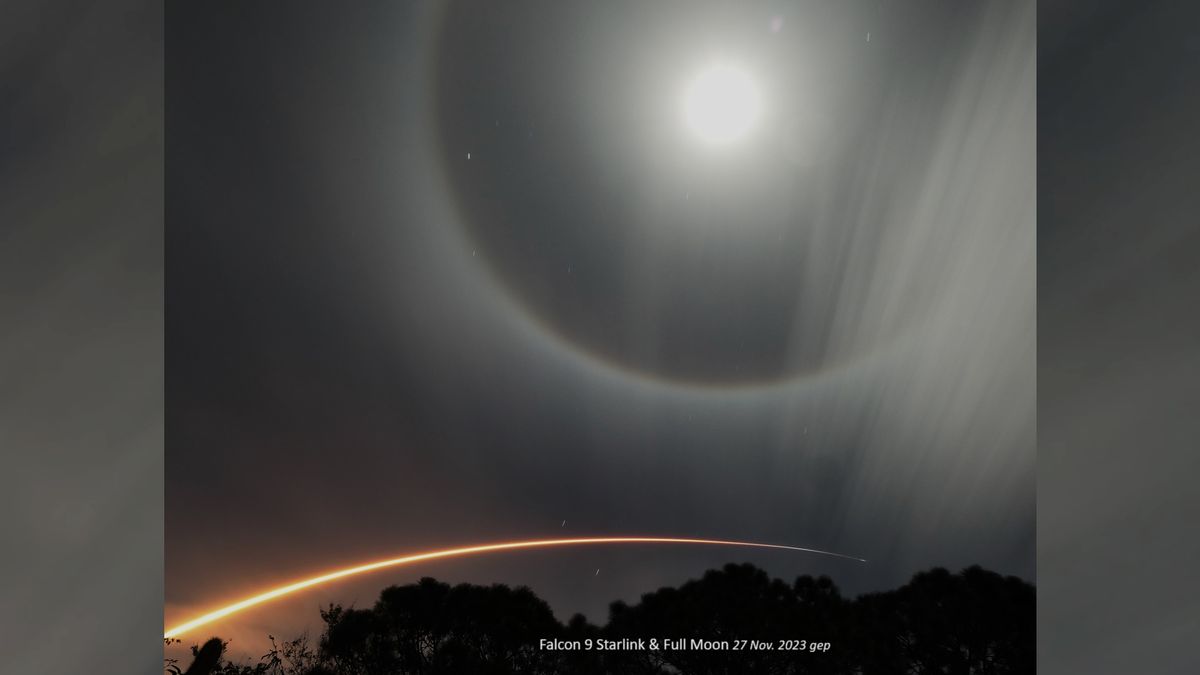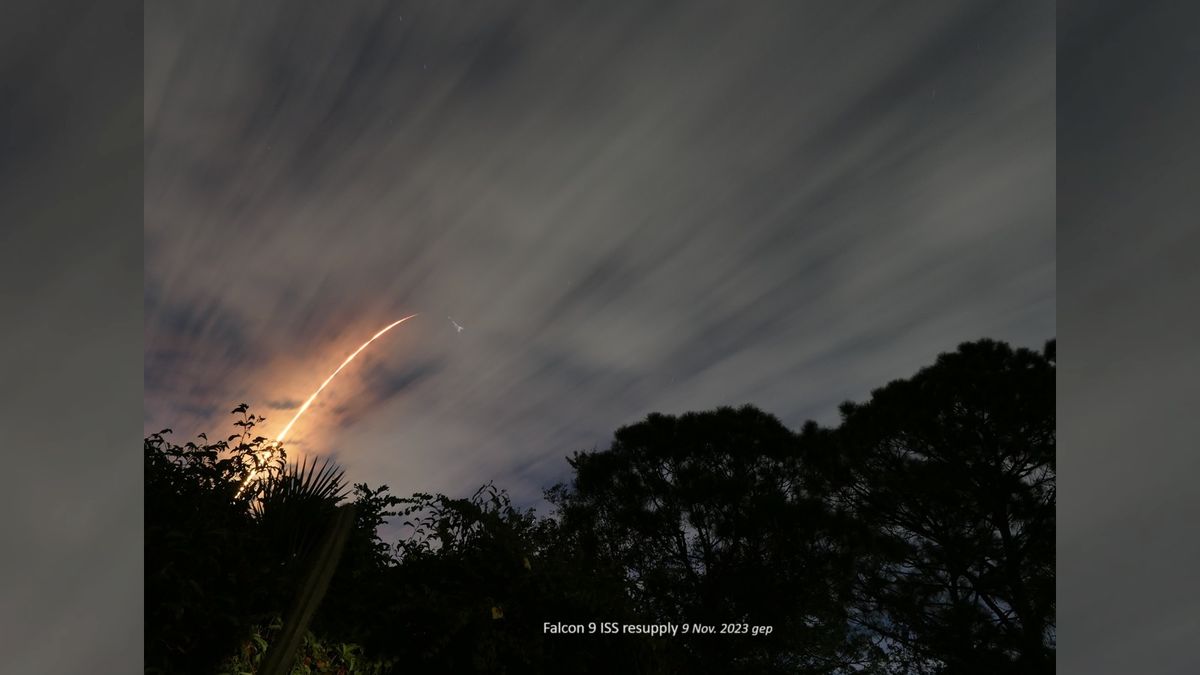
An ethereal halo of light around the full moon created by ice crystals from overhanging clouds recently shone bright during a SpaceX rocket launch in Florida, setting the stage for a stunning time-lapse photo that captured the luminous ring and streaking rocket in the same frame.
On Nov. 27, SpaceX launched one of its Falcon 9 rockets at 11:20 p.m. EST from Florida's Cape Canaveral Space Force Station. The rocket, which was carrying 23 Starlink satellites, promptly made it out of Earth's atmosphere and safely delivered its payload into low-Earth orbit.
At the same time, November's full moon was also high in the sky and surrounded by a ring of light. The luminous halo was created by light reflecting off tiny ice crystals from cirrus clouds — thin and patchy clouds that form between 20,000 and 40,000 feet (6,100 and 12,200 meters) above Earth's surface, Spaceweather.com reported.
The rocket also punched a hole through the icy clouds shortly after launch but this was not the cause of the halo. It is unclear when the halo emerged but the time-lapse image spans exactly 128 seconds, which means the ring stayed intact for at least this long.
Related: What is a moon halo?
Similar light arcs and halos are also occasionally spotted around the sun when the ice crystals from cirrus clouds perfectly align between our home star and an observer.
Photographer Gilbert Plumer took a time-lapse image of the rocket launch from Rockledge, around 20 miles (32 kilometers) from Cape Canaveral. The prolonged photo shows the fiery trajectory of the ascending rocket with the halo in the background.

The number of SpaceX launches is increasing year on year as the company expands its Starlink constellation, which aims to make the internet more widely accessible across the globe. But, despite setting the stage for some cool photos, these more frequent launches may not be such a good thing, Plumer told Live Science in an email.
"The Starlink schedule has increased so much that there is a launch every week," Plumer said. The increase in orbiting satellites is making the sky much brighter than it used to be, which is already causing problems for astronomers, he added
In July, new research revealed that Starlink satellites are also "leaking" radio waves that could hinder radio astronomers too.
The company has also been criticized because satellites can fall out of orbit and crash back to Earth during solar storms.
Although this rocket launch was not the cause of the halo of light, Falcon 9 rockets have been linked to other visual phenomena in the past, including bright red streaks of aurora-like light that appear in the sky after the rockets open "holes" in the upper atmosphere, and whirlpool-like swirls of light, known as SpaceX spirals, which are created when frozen fuel is dumped from the rockets' spinning secondary boosters.







